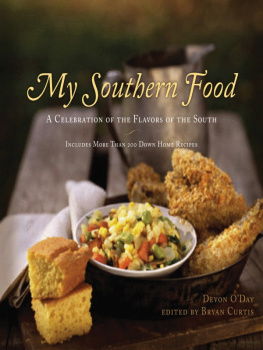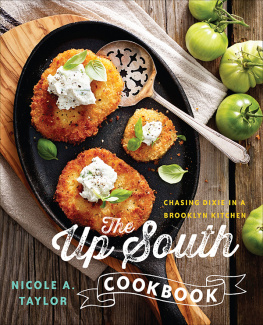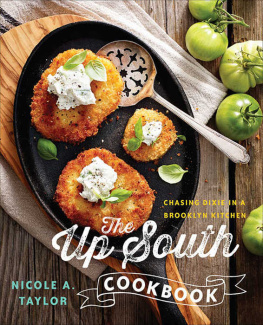Contents
Guide

PIMENTO CHEESE:
The Cookbook
50 RECIPES FROM SNACKS TO MAIN DISHES INSPIRED BY THE CLASSIC SOUTHERN FAVORITE
Perre Coleman Magness

Photographs by JENNIFER DAVICK

ST. MARTINS GRIFFIN
NEW YORK

The author and publisher have provided this e-book to you for your personal use only. You may not make this e-book publicly available in any way. Copyright infringement is against the law. If you believe the copy of this e-book you are reading infringes on the authors copyright, please notify the publisher at: http://us.macmillanusa.com/piracy.

Pimento Cheese:
A Love Story

Pimento Cheese is often called the pat of the South. Country classic and city chic. We Southerners serve it out of a tub with Saltines, or incorporate it into elegant hors doeuvres. Meat-and-threes and mom-and-pops sell it between slices of white bread, and upmarket restaurants serve it on platters with house-made charcuterie. It is ubiquitous and useful. Its good to have around when guests are visiting, and an excellent dish to take to a new mother or the recently bereaved.
I am told that pimento cheese is a decidedly Southern delicacy, one of the many and diverse foodways for which the land of my birth is known. I did not know this; not until about fifteen years ago, when I read that fact in a magazine. I, of course, knew about pimento cheese, I just assumed it was universal. You see, I did not grow up in a pimento cheese family. My mother was not a great fan, so it did not feature on our lunch or party menus. As a child, my only encounters with pimento cheese were blobs of red-spotted techno-orange wallpaper glue on white bread at some friends house. It was the kind of pimento cheese spread purchased in plastic tubs from that top shelf in the dairy aisle, you know, next to the Limburger and neon yellow egg salad. That was my experience of pimento cheese, and I had no real interest in exploring its possible virtues. I also had a childhood adversity to mayonnaise, which in retrospect I cannot fathom. Ah, the years of wasted youth.
As an adult, I discovered that many people around me have strong opinions on pimento cheese: fond childhood memories of Grandmas homemade pimento cheese, or closely held secret ingredients that make their own family recipe unique. I couldnt help but be curious. Had I really missed something? Then the showers started to fall in my lifebridal showers, baby showersalmost nonstop for a large section of my twenties. Pimento cheese figured heavily at these events. It is considered easy to prepare, delicious, and something everyone likes. So I started to try the little finger sandwiches, or delicate molds of pimento cheese served with crackers, sometimes even celery sticks stuffed with the mix, and I had a revelationits good. Like stupid good. So I set out to become something of an expert.
Pimento cheese is immutable (cheese, pimentos, mayonnaise) and yet somehow permutable. At the heart of this is the fact that the flavor combination is a good one. Tangy sharp cheese, peppers with bite, but not heat, and creamy mayonnaise just work togetherand wonderfully. So taking the flavor combination and applying it to other dishes just seems natural.
 A Brief History of Pimento Cheese
A Brief History of Pimento Cheese 
Like any good Southern tale, pimento cheese has a storied past. It came to us as an exotic ingredient from far-off lands (Spain!), and cheese was expensive, so pimento cheese was the perfect way to outshine our lady friends at dainty teas and formal luncheons. But resourceful Southerners always find a way, and Georgia farmers started growing pimento peppers to bring down the price of our favorite sandwich.
But when the hard times hit, we dug into our deep inner reserves, swearing we would never go hungry again, and turned those simple sandwiches into a profit center during times of war and the Depression. Making sandwiches, craftily wrapped in grease paper, to sell to the workers at North Carolina cloth mills became an acceptable earner for housewives, a business that was still considered ladylike and charming. I imagine the proper pimento cheese purveyor could still wear her pearls to work. Thats how Dukes Mayonnaise, the preferred pimento cheese binding agent, came into beingas a big hit on sandwiches sold by a genteel lady to soldiers during World War I.
The first mention of red peppers mixed with cheese in a recipe book appears to be in Mrs. Hills Southern Practical Cookery and Receipt Book, originally published in 1867, which recommends adding pepper as a way to keep cheese fresh before the advent of refrigeration. It wasnt until around 1908, when the business of canning pimentos in the United States began, that recipes using them started to proliferate. Pimentos became a fancy ingredient, with their exotic whiff of distant lands. Everyone from Fanny Farmer to Mrs. R. S. Dull mentions them in many recipes. Not many early cookbooks have recipes for pimento cheese spread, and my surmise is that it was something so pedestrian, so automatic in the kitchen, that it did not merit a formal recipe.
My research into the subject leads me to lay out this history of pimento cheese. As with many iconic dishes, pimento cheese started out in home kitchens as cheese mixed with peppers and mayonnaise. But its popularity eventually led it to be commercially produced by the aforementioned female entrepreneurs, who took that homemade staple and turned it into income. These businesses grew and turned into going concerns that sold pimento cheese sandwiches, and then spread to the newly burgeoning supermarket chains. Big producers picked up on it. Cream cheese manufacturers outside the South added pimentos to their product to expand their offerings. When processed-cheese foods hit the scene, pimento was an obvious flavor to incorporate. But in homes across the South, people (mostly women) were still mixing up bowls of their own particular pimento cheese. As time moved on, Depression, war, the convenience-food craze, and the rise of gourmet foods changed the tastes of the buying public, and the popularity of those prepackaged sandwiches and salads like pimento cheese waned, but not at home, and not in the South. So many Southerners have such deeply ingrained memories of pimento cheese, that it was inevitable that chefs from the region who began to explore and celebrate the food of their homeland, rather than excoriate it as old-fashioned and out-of-date, turned to that little orange spread of their childhood. So the everyday staple of so many Southern homes had reached the status of food icon. It is no longer the province of small-town lunch counters, its now often the most talked-about offering on Manhattan menus.
















 A Brief History of Pimento Cheese
A Brief History of Pimento Cheese